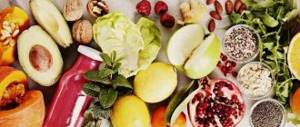What is regular milk like?
When choosing good quality milk, attention must be paid to the method of its heat treatment. It is for this feature that the product is usually divided into several types.
| Milk heat treatment option | Peculiarities |
| Pasteurized | The dairy product is processed at 70 degrees. This temperature does not deprive it of most of its beneficial substances and properties. In this case, pathogenic microorganisms are destroyed. This treat is very nutritious. It can be stored for no more than 5 days subject to optimal temperature conditions. |
| Ghee | Milk is prepared at 80-99 degrees. This processing preserves valuable protein and a lot of other useful substances. The product has a high fat content. Its shelf life usually does not exceed 7 days. All this time the packaging must be well closed. |
| UHT | Milk is heated at 125-140 degrees. After this, it is quickly cooled using special equipment. This heat treatment option is good because it provides the product with a long shelf life of 5 months. As a rule, the fat content of such milk does not exceed 6%. |
| Sterilized | This is a method of steaming milk, in which the temperature rises to 100 degrees. The whole process does not take more than 10 seconds. After heating, the product is cooled. Sterilized milk can be stored for several months. It is easily recognized by its watery taste. |
Pasteurized and baked products are considered the most useful, since it is in them that the benefits and rich composition are preserved as much as possible.
What to replace it with?
“What can replace chocolate in this recipe? Can you make it without cocoa? I'll cut the sugar in half. What can I replace flour with?”
The most popular question at the master class: how to replace everything. Take a successful, tasty, stable, well-developed recipe and change it all. For what? Well, just like that. Moreover, I must answer immediately, having built in my head another, essentially, recipe. Without interrupting the master class, immediately come out of your head with a completely different recipe, just as successful.
People ask this because they don’t quite understand how it works in a pastry shop. In a salad, for example, if you don’t put tomatoes, it won’t get much worse. Or if you put butter rather than vegetable oil in pasta, you will still end up with pasta. Well, they will taste a little different. The dough recipe is all wrong.
“Is it possible not to put chocolate in a chocolate biscuit?” - this question is the same as if you asked “Is it possible not to put pasta in pasta?” It’s probably possible, but it won’t be pasta, and the recipe will have to start from scratch. In the dough recipe, almost all the ingredients are the main ones. You can't make steak without meat, you can't make pasta without pasta, and you can't make tomato salad without tomatoes. Everyone understands this. So, believe me, in the same way you cannot change the subtle chemistry and physics of the interaction of the main ingredients in a successful recipe if you do not understand what role this or that ingredient plays.
Confectionery recipes do not allow liberties.
Today a student told me how she made Pavlova cake according to my recipe, only she didn’t weigh the ingredients, she took a lot of proteins, but not enough sugar, and they didn’t whip, she poured vinegar in it, and then after baking everything settled for some reason. Her question was - why did it settle?
Indeed, why. :-)))
Confectionery is a methodical and precise business. Be as thorough as possible when following recipes. Weigh your ingredients. Do not replace or reduce essential components. If it says - mix dry ingredients - mix. If it says, warm it up, warm it up. If you cook according to my recipe, I won’t just write anything.
There are things that can be changed in the recipe. You can replace ingredients that act as flavorings. For example, cherry pie can be made strawberry. Lemon curd can be made into lime curd. You can add spices, you can add coarsely chopped nuts. You can even replace a little flour with the same amount of cocoa and make the sponge chocolate. Sometimes in a biscuit you can replace butter with vegetable oil, and in custard cream with milk. Kefir can be replaced with yogurt, but sour cream cannot always be replaced with yogurt.
Here is a small list of changes that can and cannot be made for beginners who do not yet know how to compose their own recipes and do not know how products interact with each other:
Biscuits and cupcakes
You can add flavoring dry additives, such as zest, spices, large nuts.
In a cake you can replace 20-40 g of flour with the same amount of cocoa, it will be chocolate.
You can add berries, pieces of chocolate, nuts, apples, fruits to the muffins (except strawberries, we don’t put them in baked goods).
You can use fatty or low-fat sour cream. In extreme cases, you can replace it with yogurt, but the taste will change.
Yogurt, kefir and buttermilk are interchangeable.
A quarter of the wheat flour can be replaced with starch or almond flour. It will turn out more crumbly.
Sugar can be reduced by a quarter.
You cannot greatly reduce the wheat flour (there will be no fluffiness), you cannot reduce the liquid, eggs, replace baking powder with soda and vice versa, change the amount of butter and eggs. All this will significantly affect the structure of the test.
Shortbread dough
You can replace a third of the flour with almond flour, it will be more crumbly.
The liquid can be replaced with yolks. With liquid the dough will be more elastic, with yolks it will be more crumbly.
Water can be replaced with vodka. The dough will be crispier.
You cannot reduce the oil or violate the cooking technology.
Choux pastry:
You can replace milk with water, reduce it a little or add salt and sugar. Nothing else can be changed.
Meringue and macaron
Nothing can be changed, especially not reducing sugar.
Custard
You can exchange milk for cream and vice versa. The sugar can be reduced and replaced with a sugar substitute (yay!). You can replace whole eggs with yolks in the same quantity, the cream will become less dense.
This is of course not a complete list, but it gives you some idea.
How can you replace milk in your diet?
Not everyone can afford to eat baked goods and other treats that contain milk. This can be explained for various reasons, but they will be discussed a little later.
Note! People with lactose intolerance and other components of the product are forced to refuse dishes to which milk is added.
There are many options for replacing milk in your diet without compromising the taste of ready-made dishes based on it.
Fermented milk products and lactose-free products
The best option for replacing an unsuitable product is to choose lactose-free options. In modern stores you can find a lot of goods of this kind. Therefore, searching for them will not be a problem.
We must remember! If you are lactose intolerant, you should replace cow's milk with sheep or goat milk.
Fermented milk products are a good alternative with their own advantages. You can replace milk with sour cream or kefir. It is best to focus your attention on products with a low fat content.
It is believed that kefir, yogurt and fermented baked milk are more beneficial for human health. They have a beneficial effect on the functioning of the digestive tract as a whole. Plus these are hypoallergenic products.
Water
How can you replace milk in baking? An alternative is plain water. To improve the taste of the finished products, you can supplement the recipe with other ingredients, such as juice or cocoa.
A good option is mineral water, which makes delicious muffins and pancakes. It makes the dough very tender and airy.
Plant milk
An equally popular product today that can easily be found on the shelves of modern stores. Plant-based milks that can be used to replace regular milk are made from seeds, soy and nuts.
Coconut milk
Coconut milk is very similar to cow's milk. The reason for this is its fat content and similar structure.
Interesting to know! Coconut milk is a great addition to coffee or other hot drink.
The product has a sweetish taste and low fat content. It is suitable for adding to baked goods.
Rice milk
Here's something else you can replace milk with - a rice product. This is a sweetish drink, enriched with a whole vitamin complex. It is especially popular in Japan and China.
An alternative to it is buckwheat and oat milk.
Soy milk
In most cases, it is bought by people who have decided to refuse to consume any products of animal origin. Soy milk has a high protein content. You can simply drink it and use it in the preparation of various baked goods.
Is it possible to replace kefir with milk?
Kefir is used in baking, making it unusually airy and tasty. But this product cannot always be found in the refrigerator. Milk is much more common there.
But simply pouring in the other instead of one will not work. Milk is not a fermented milk product, and it does not contain the necessary acidic environment. Therefore, first of all, it is fermented.
There are two ways:
- using freshly squeezed lemon juice;
- using vinegar if there is no lemon.
Milk for fermentation needs to be warm, but not hot, add one tablespoon of oxidizing agent and voila - you get buttermilk right before your eyes. It tastes like sour milk or white yogurt. In dough it is equivalent to kefir and does not spoil baked goods.
In some dishes, it is appropriate to use milk instead of kefir without unnecessary manipulation. For example, in pancake batter. If the housewife usually cooks it with kefir, but there is none at home, then you should pay attention to the recipe below.
What you need for pancake dough with milk:
- two eggs;
- 0.5 liters of milk, preferably sour;
- flour;
- salt;
- soda;
- vanillin (optional).
The eggs are mixed with milk in a large bowl. Add soda. It only works if you use sour milk; you don’t need to mix it into fresh milk. Beat the mixture with a mixer for at least one minute. After this, add sugar, butter, salt and vanillin.
Lastly, add the sifted flour to the bowl. Its quantity is determined by eye; the dough should be liquid, but not water. Then it is left for twenty minutes. At this time, you can heat up a frying pan with vegetable oil. When the dough has risen, it’s time to fry. Bon appetit!
The pancakes turn out airy and very tasty. And for those housewives who doubt whether it is possible to replace kefir with sour milk, this recipe should definitely try and make sure that even a slightly expired product can be useful.
Is it possible to replace sour cream with milk?
Depending on why sour cream is needed, the answer to this question will differ. Although in most cases this replacement is unequal. Their fat content and consistency are different, which will not lead to an identical taste of the dish. But here too you can get out.
If you really want to experiment and have a lot of free time, then there are a couple of tricks.
Replacing sour cream in the dough will go unnoticed if you follow these tips:
- the soda required by the recipe gives way to baking powder or is quenched with vinegar before adding to the mixture;
- the fat content that sour cream would give to baked goods can easily be obtained by adding ordinary butter or margarine;
- The flour must be sifted. It will give baked goods that very fluffiness that cannot be achieved without sour cream.
But you can simply ferment milk using the above method. Sour cream can be easily replaced with any other fermented milk product, from kefir to fermented baked milk. So buttermilk will work well too. But why reinvent the wheel? It’s better to just stock up on sour cream for future use, leaving all the tricks for the most extreme case.
Read about how to replace high-calorie foods on your diet. And also about how to cook honey mushrooms in sour cream.
Is it possible to replace milk with powdered milk?
The production of milk powder is no longer a curiosity; small packs of this product can be found in any grocery store at affordable prices. But is it a full replacement? No, they are not the same, and when diluting the powder with water, you cannot get the taste of regular milk.
But it will be stored much longer than fresh. What is the difference between them? In nutritional value. Powdered milk is much less valuable than ordinary milk. But the number of calories in it is an order of magnitude greater. Therefore, you should only use it for baking; it’s just better to buy fresh for food.
Proportions for dilution: 90 g per 1 liter of warm water. Milk can replace many products in cooking, often without loss of quality. But in some cases, you should still go to the store or stock up on the necessary ingredients in advance so as not to worry about the end result.
Why did you decide to replace dairy products? Leave your message in the comments! And also watch a video about how to replace cow's milk.
How to replace milk in baking
Replacing ingredients in recipes on your own is a big risk, since as a result of such cooking, the treat may simply not turn out. But with milk things are a little different. There are a lot of its analogues that do not have a significant impact on the final dish.
Important! When substituting milk in a recipe, you must consider the proportions of dry and liquid ingredients.
During baking, you can replace regular milk with dry cream or baby formula. In this case, buns and other products will be close to the originals. Can milk be replaced with water? Of course yes. But in this case, the baked goods will lose their pleasant milky taste, which should not be forgotten.
Kefir as an insecticide
Due to the nature of the digestive system, not a single pest insect is able to digest lactose (milk sugar). This feature allows the use of fermented milk products, including kefir, as a means of combating parasites:
- cruciferous flea beetle;
- aphids;
- onion fly;
- leaf roller;
- earwig;
- slugs.
The areas affected by the pest are treated with a kefir solution (1 liter per 3 liters of water). Traps are made to control slugs. Containers are dug in between the rows and a little kefir or curdled milk is poured into the bottom. Insects, attracted by the sour smell, fall into a trap from which they can no longer get out, as a result of which the pest population is noticeably reduced.
⊕ In addition to natural insecticides, you can use store-bought ones ⇓
- Insecticide Fitoverm : instructions for use, reviews, analogues
- Insecticide Kurzat : how to use against garden pests, reviews, analogues
- Insecticide Iskra : how to use, application and watering rates, reviews
Why people are forced to look for a replacement for cow's milk
There are many reasons that require searching for an alternative to traditional milk. The following are the main ones:
- Difficult to absorb by the body. This is especially true for pasteurized goods, in which not only pathogenic but also beneficial microflora are destroyed. As a result of drinking this drink, cramps, bloating and diarrhea are not excluded.
- Increased blood sugar levels. This is due to the high glycemic index of the product. Sugar levels rise especially strongly if you drink the drink on an empty stomach.
- Provoking allergic reactions. Milk is an allergenic product, which is why many people are intolerant to it.
- Presence of antibiotics and hormones. They are fed to cattle. The drugs pass into milk and then end up in the human body.
People also avoid nutritious treats for personal reasons. For example, they do not accept the consumption of animal products. Milk is one of them.
Kefir instead of milk
Is palm oil harmful? Can dairy products contain vegetable fats? Are farm products healthy? What else is of particular concern to us today?
Myths about healthy eating are commented on by the head of the National Research Institute, professor at Moscow State University Oleg Stefanovich Medvedev.
Myth 1: Palm oil is harmful
— This myth is now being actively discussed. One of the reasons is the possible introduction of an excise tax on palm oil. If passed, the product would be subject to a special government tax. Along with such products that are not the safest for health, such as alcoholic beverages, cigarettes, and gasoline. What was wrong with palm oil, why did it end up in such a “company”? The main accusation is that it is “technical”. Various media and public speeches by officials actively support this point of view. But everyone forgot to ask the experts. Thus, neither the Minister of Health Skvortsova nor the Institute of Nutrition of the Russian Academy of Medical Sciences point out either the harm of palm oil in general, or the presence of industrial oil in particular. Palm oil is a product that we purchase abroad, and all exported oil must undergo primary processing. This allows it to be free of free fatty acids, which are commonly used to make cleaning products. Further processing of the oil takes place in Russia. For some reason we are not afraid of sunflower or olive oil when they are used in industrially prepared products. Although the so-called spoilage rates of olive oil are initially even higher. According to WHO standards, the concentration of peroxides for most vegetable oils, including palm oil, should be no more than 10. Russian standards fully comply with these standards. Conclusion: do not panic and refuse to buy food products that contain palm oil. There is no industrial palm oil.
Myth 2: Dairy products should not contain vegetable fats
— If production standards are met, there is no need to dramatize the situation. Vegetable fats can be included in dairy products. According to the technical regulations of the Customs Union, there are two types of dairy products. The first is made only from milk, actually dairy products. And the second - with partial replacement with vegetable fats, they are called milk-containing. Initially, the latter were invented in order to improve the health of traditional milk products. Since animal fats contain a lot of saturated fatty acids, which increases the risk of cardiovascular diseases. The only thing that hurts is the greed of manufacturers who pass off compounded products as pure dairy products, increasing their prices. And thus deceiving consumers, that is, us. Naturally, vegetable oils, including palm oil, must be indicated on the labeling of milk-containing products. Components of palm and other vegetable oils are used to produce baby food. Since no single butter or cow's milk can replicate the composition of a woman's breast milk, a mixture of them is used. Experts believe that the proportion of animal fats in formulas that replace breast milk should be at least 25%. Of course, it is ideal to breastfeed your baby, but if you have to choose a formula, then you should not be afraid of the palm oil in the composition. Conclusion: Vegetable fats are allowed in compounded products if indicated on the label. They are no more harmful than dairy products, but they are cheaper. For infant formulas, a palmitic acid fraction is used to bring the mixture closer to the composition of human breast milk.
Myth 3: “farm” products are better than conventional ones
— In recent years, more and more so-called “farm” products have appeared on store shelves. With these words, we have an image of a handsome old man grazing his cows in a meadow. And this is exactly the kind of milk we buy, overpaying many times over for this product. Unfortunately, in most cases this is not the case. Many manufacturers simply include the words “farmed”, “natural”, “nutritionist recommended” and the like in the name to attract attention. This is just a marketing ploy. If you really want to eat healthier foods, then it is better to find a farmer and purchase his products. Or buy specialized, fortified products that contain more vitamins and beneficial elements. For example, such as vitamin D and live bacteria in dairy products or fiber in yogurt. When purchasing such products, you should carefully study the label to ensure that enough vitamin or macronutrient has been added and not a residual amount. Just to put this inscription on the label. Conclusion: the labels “farmed” and “natural” on food products do not indicate their increased benefits. Read the composition and nutritional value of the product to make sure it is beneficial for the body.
Myth 4: Milk must be consumed daily and in large quantities.
— Experts, having conducted their own research and familiarized themselves with the data of their European and American colleagues, came to the following conclusion. The importance of milk for a balanced diet is greatly exaggerated. Adults do not need to consume a lot of milk. In addition to lactose and galactose, milk contains large amounts of saturated fat, which can cause cardiovascular disease. Current international recommendations for healthy eating are as follows. An adult should not consume more than one glass, or 150–200 g of milk per day. However, this does not apply to fermented dairy products such as cheese, yogurt, kefir and curdled milk. They contain much less lactose and galactose, and are also rich in probiotics and beneficial microorganisms. It is better to prefer fermented milk products without sweet additives, so as not to get a heavy dose of sugar along with the benefits. Conclusion: Milk is not a product for frequent consumption by adults. It is better to concentrate on dairy products with live bacteria: kefir, yogurt, low-fat curdled milk and without additives.
Myth 5: There are healthy and unhealthy foods.
— We often forget that the body does not receive dairy, flour or any other products, but their components: proteins, fats and carbohydrates.
Therefore, the frequently asked question: “Which foods are healthy and which are harmful?” It’s impossible to answer unequivocally. It all depends on their quantity and individual metabolism. There is no point in arguing about harmful or healthy foods. It’s better to talk about diet, namely the ratio of certain products that you consume every day. These are vegetables and fruits, legumes and whole grains, nuts and vegetable fats, fatty fish and lean meat. Of course, if you really want to, you can afford fast food or, say, chips. But once a week or month, if the rest of the time your diet fits the one described above. Scientific research shows that the healthier your daily diet, the less you crave fast food and sweets. Conclusion: you can’t talk about harmful and healthy foods, it all depends on their quantity and the basic composition of your diet. Natalya EPIFANOVA
Alternative sources of calcium in the diet
It's no secret that milk is the main source of calcium that the human body needs. If you refuse it, the problem of finding alternatives arises.
The following foods are sources of calcium:
- Leafy greens.
- Almond.
- Beans.
- Sesame.
- Herring.
These are just some of the foods that are fortified with calcium.
Health dangers of milk
Despite all the benefits of milk, it is still dangerous for some people. This is all due to the content of individual components that can negatively affect internal processes and the functioning of organs.
Abuse of cow's milk can lead to the following undesirable conditions:
- Diseases of the cardiac system.
- Diabetes.
- Asthma.
- Obesity.
- Anemia.
- Arthritis.
- Allergy.
- Hoarse breathing.
- Dermatological pathologies.
- Swelling of the eyes.
- Digestive disorder.
If you are prone to these pathologies, it is recommended to refrain from actively consuming dairy products.
Gluten-Free Casein-Free Diet
The dairy substitute options below allow you to use traditional (familiar) recipes for casein-free (and gluten-free) baking. We will talk about whipping cream separately in specific recipes for pastries and cakes.
To prepare 1 glass you will need:
Heavy cream -
- 2/3 cup milk replacer (vegan) + 1/3 cup vegetable oil, melted margarine (no trans fat) or coconut oil or 3 tablespoons organic ghee (labeled GBK) OR
- 1 cup coconut cream (the thicker kind, not milk)
Low fat cream (light cream) –
- ¾ cup milk replacer (vegan) + ¼ cup vegetable oil, melted margarine (no trans fat) or coconut oil or 2 tablespoons organic ghee (labeled GBK) OR
- 1 cup coconut milk (low fat)
Kefir/yogurt (buttermilk) – 1 tablespoon lemon juice or apple cider vinegar + vegan milk substitute enough to bring the contents to 1 glass. Let stand 4 - 6 minutes before using in recipe.
Sour cream (for baking and icing only) -
- ¾ cup prepared “kefir” + 1/3 cup melted margarine (no trans fat) or coconut oil or (3 tablespoons organic, additive-free ghee (labeled BGBK) OR
- (if soy is allowed in the diet) 1 cup firm tofu, blended with 1 tablespoon lemon juice or apple cider vinegar
Condensed milk (sweetened condensed milk) - prepared using a dry milk substitute mixture (such as Dari-Free on a potato base) -
- ½ cup dry milk replacer mixture +
- ¾ cup sugar (or appropriate amount of dietary sweetener) + 2 tablespoons margarine (no trans fat) or coconut oil or (1 tablespoon ghee (labeled GBK) +
- ½ teaspoon xanthan (thickener).
- To prepare, mix all ingredients thoroughly, heat over medium heat until boiling and let simmer over low heat for one minute. Cool.
Butter –
- 1 cup margarine (no trans fat) + 1 ½ tablespoons water OR
- ¾ cup vegetable oil OR
- 1 cup coconut oil
Useful links (where to buy):
https://www.to111.ru/moloko.html
What you can do:
What not to do due to traces of casein:
We recommend:
https://www.diva-natur.com/
Eco-friendly ghee BGBK Finck Bio Ghee 500 g
Coconut oil
Coconut oil
Potato substitute for milk, cream, etc. Dari free
Coconut milk and cream TIANA
Coconut milk and cream
How to do it yourself:
Cashew sauces and sour cream - 3 recipes (not just for pancakes!)
Custards
How to make vegan condensed milk
How to make cheese on the BGBK diet
Vegan quick cream cheese from almonds (starch), BGBK
Your mark:
Share this:
- Click here to share content on Facebook. (Opens in a new window)
- Click to print (Opens in new window)
- Click to share on WhatsApp (Opens in new window)
- Click to share on Twitter (Opens in new window)
- Send this to a friend (Opens in new window)
- Click to share on Pinterest (Opens in new window)
- Click to share on LinkedIn (Opens in new window)
- Click to share on Telegram (Opens in new window)
How to replace other dairy products
We found out what can replace milk. Now it’s the turn of other products that are made on its basis.
How to replace butter
Vegetable margarine has been a substitute for butter since ancient times. But still, many are trying to find a more natural alternative. In this case, you should pay attention to coconut and olive oil.
Avocado and bananas can be a great substitute for butter in baking.
How to replace cheese
If you need to replace cheese in a recipe, you should add the following products instead:
- Natural cottage cheese.
- Nutritional yeast.
Both components have a rich composition and give dishes a special taste.
Pancakes with sour milk
If you love curdled milk and store it in the refrigerator, or often leave unfinished milk unattended, then this recipe is for you. Let's learn how to make a masterpiece using products that are on hand in every family.
An important condition for pancakes with yogurt is the density of the dough.
It should look like store-bought sour cream. We will need 1 cup of yogurt, 2 cups of flour, 0.5 teaspoon soda, 0.5 teaspoon salt, 4 tbsp. spoons of sugar and sunflower oil about 5 tbsp. spoons
- Mix the egg with baking powder or soda, sugar, butter and salt.
- Combine ¼ part of the flour and ½ part of a glass of curdled milk, bringing to a homogeneous mass.
- Add the rest and mix until the cream becomes thick.
- Wait 30 minutes.
- Heat the frying pan, add oil, pour the dough into the middle part so that the mass spreads along the bottom.
- Fry pancakes on both sides.
We have looked at the main points of how yogurt differs from kefir and fermented baked milk. You have learned what is healthier and what is higher in calories. Each drink is unique in its own way.
We must remember how important they are for the intestines, and what properties each individual has. Healthy for children and adults, excellent in taste, fermented milk products should be included in the diet of every family.
When preparing the recipe for “cheesecakes with kefir” you need kefir, but can you use fermented baked milk instead? After all, fermented baked milk is a product made from baked milk, and kefir is made from plain milk.
Try it, of course. For example, I can’t have kefir and I replace it with fermented baked milk everywhere. Kefir contains kefir grains, fermented baked milk contains ordinary sourdough and baked milk instead of ordinary milk. But both are fermented milk products.
Kefir is more sour. But they advised to quench the baking soda with vinegar additionally when replacing kefir with fermented baked milk; do not do this, otherwise the vinegar and fermented baked milk will mix and it will be tasteless, and the fermented baked milk may even curdle. And it is wrong to dilute it with water; the acidity of fermented baked milk will completely decrease.
Try replacing kefir with fermented baked milk at least once, and then you’ll know for sure whether you like it or not.
Also try replacing kefir with low-fat sour cream.
The point is not that fermented baked milk is softer, but kefir is more sour. Various microorganisms are used for their production. For fermented baked milk, these are lactic acid bacteria (as for yogurt). In addition to lactic acid bacteria, kefir always contains yeast; they are necessarily part of the kefir fungus. It is thanks to yeast that pancakes and pancakes made with kefir are so fluffy. Especially if you let the dough sit for a little while (pancake dough must contain sugar).
Therefore, it is better not to replace kefir with fermented baked milk in pancakes. or you will have to add a baking powder, such as baking soda + vinegar or baking powder from bags.
I often substitute dairy products. If the recipe calls for milk, I can add kefir diluted with water or yogurt diluted with water instead. And vice versa. The taste of the finished product varies slightly, but I love experimenting. Therefore, kefir can be safely replaced with fermented baked milk. Moreover, they are approximately the same in consistency.











